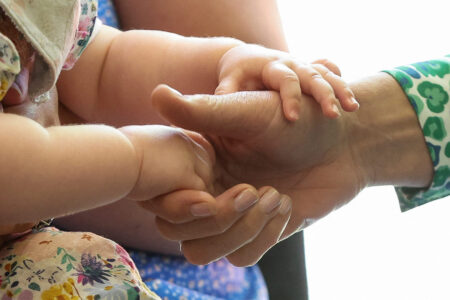
It must be irritating for men to hear again that women say that not enough has been done for them. There is an International Women’s Day, and the parallel men’s day on November 19 is much less well known. Canada’s latest federal budget promised help for female but not male entrepreneurs. Will women ever be satisfied?
And yet I too have to say that we’re not there yet for women’s full equality, but I don’t mean equality with men. We’re not there yet for full equality between women. The 2018 budget massively favoured one choice for women: paid labour force participation. It ignored women or men who prefer to be home with the children. The paternity benefits offered were impractical for men in many careers and token. Men can’t breastfeed. To give women the option of expressing their milk so Dad can later feed the baby enables that lifestyle, but not all want it.
Martha Friendly, Susan Prentice and Morna Ballantyne have argued again for universal child care, saying it was promised in the report of the 1970 Royal Commission on the Status of Women. What they did not mention is that the commission said a substantial cash allowance of up to $500 should be paid in monthly instalments to all mothers, universally, and untaxed, since “the contribution made by mothers who stay home to care for children would be recognized.” The authors did not point out that the commission also called on the family to be the unit of taxation, also valuing the caregiver role as a full partner in the household. We do not have family-based taxation, but we could have.
Prime Minister Stephen Harper’s move toward income splitting, however, was reversed by Prime Minister Justin Trudeau, and keeping the individual as the base for taxation again ignores the caregiver’s role as a partner, not a dependant. The balance is tilted under the Canada Labour Code toward maternity benefits — not for all moms, but for moms with paid work. The child care expense deduction is tilted also toward moms who use third-party care. The result is so favourable to mothers in the paid labour force that the 2018 budget even had the audacity to say “very few mothers work while receiving maternity benefits.” Well, only if you have never cared for a newborn can you think that those sleepless hours are not useful work. You are saving a life.
I am in favour of universal funding for all children. I am in favour of choice, not just funding institutional child care but funding care of children wherever they are, even if at home or with a sitter or grandparent or nanny. Let freedom reign.
What universal third-party child care offers is a drop-off so that women can earn away from home. But not only are there tasks to do at home that someone has to do, but this whole unpaid part of the economy, if neglected, puts budget calculations out of whack. John Kenneth Galbraith, in Almost Everyone’s Guide to Economics (1978), wrote, “Economists would get a very sudden increase in the GNP by discovering and including the unpaid labor of women.” At a UN conference in Beijing in 1995, Canada promised to tally this unpaid labour. In 1994 Statistics Canada estimated that the value of household work could be one-third or more of the GDP.
But it is not counted, and so women are expected to dance backwards in high heels, toting that briefcase, and enjoying it, even if their preference is to be home with their toddler. A 2013 poll by Abingdon Research found that 76 percent of those asked preferred parental care, the second most preferred option was care by a relative, and third-party daycare was the third option.
Universal daycare is an expensive proposition, and in addition to not being practical for special-needs kids or rural kids, it funds spaces that are empty part of the time due to parents’ paid-work schedules or illness. It takes money from general tax revenue to fund a one-size-fits-all style of care that may not meet the needs or schedules of all. And to do so, it takes funds away from parents who tag-team, earning in shifts, and from parents who use sitters and nannies, grandparents, or even a parent at home.
If funding flowed with the child, as the lawyers put it, then there would be more likelihood of all preferences and needs being addressed. In 2002, Hamburg, Germany, introduced a voucher to let parents choose the style of care they wanted. Austria has a similar program. Norway tried universal daycare and found it very costly, so it also funded parents at home if that was their preference, because it cost less than trying to fund a spot for every child in daycare. Sweden, often cited as the epitome of universal daycare, does operate it; but even there, a 2006 poll by the Varlden Idag newspaper found that 64 percent of parents said optimal care would be for the child to be home with a parent until age four. Sweden provides 480 days of parental leave, and much of it is at 80 percent of salary, a rate also given if a parent is home with a sick child.
A 2009 study by Sandra Krapf of the Max Planck Institute for Demographic Research found that in Sweden the birth rate does not necessarily go up just because there is available daycare. The more children were covered by public and private third-party child care services at ages 1 to 2 years, the lower was the probability of people having a first child.
If we really want women’s equality, we have to look at demographics. Someone has to renew the population, to fund pension plans and build bridges when we are seniors. The latest federal budget admitted the government is trying to address the fact that the population is aging. But having more women in paid work nonstop and having universal daycare have not raised the birth rate in Quebec. It was only when maternity benefits were delinked from the federal employment insurance program that births there went back up, but briefly.
The latest budget makes the secretariat for the status of women a full department. I applaud this move. But we have to look at the full range of what women do in an economy, not just their paid work but their unpaid care roles. Universal daycare may seem to provide choice — take it or leave it — but it really funds only one option. Paternity benefits may seem to give choice — take it or lose it — but they really fund only one lifestyle.
In a democracy we have to let people be different. The Supreme Court’s M. v. H. decision in 1999 ruled that government should not take sides in lifestyle choices. The UN 1959 Declaration of the Rights of the Child says the child has the right to an atmosphere of affection, and the right to “grow up in the care and under the responsibility of his parents” whenever possible. Funding only universal daycare does not give that choice.
What we are forgetting is the observation of the New Zealand economist Marilyn Waring. She wrote in Counting for Nothing: What Men Value and What Women Are Worth (1999), “Every time I see a mother with an infant, I know I am seeing a woman at work.”
We need to value that work, whoever does it — and sure, daycares can do it, but some people prefer to have Mom or Dad or Grandma do it. Fund them equally.
Photo: Shutterstock, by Dobo Kristian.
Do you have something to say about the article you just read? Be part of the Policy Options discussion, and send in your own submission. Here is a link on how to do it. | Souhaitez-vous réagir à cet article ? Joignez-vous aux débats d’Options politiques et soumettez-nous votre texte en suivant ces directives.









